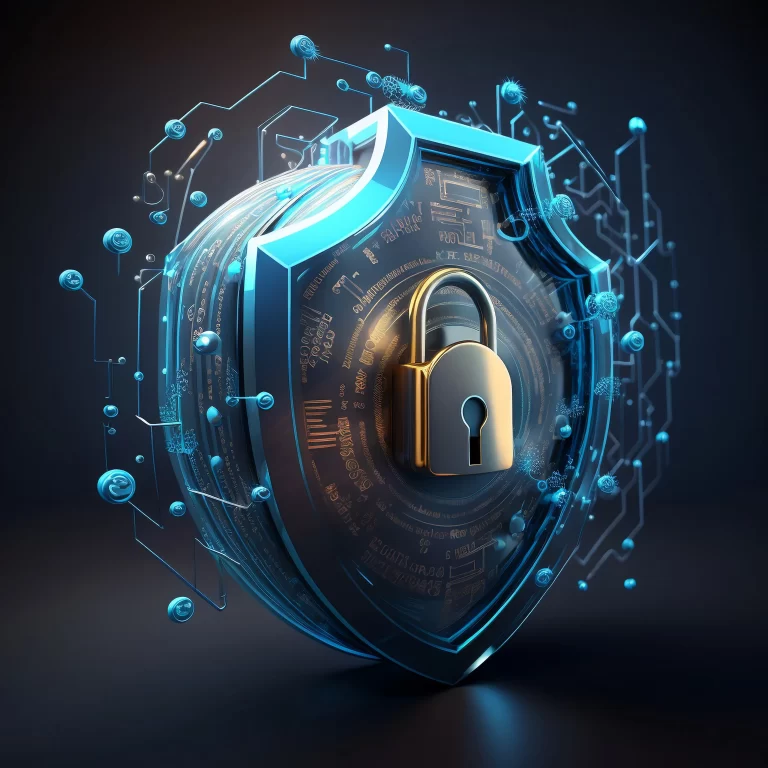What is Cyber Security? | Cyber Security Explained

As we gained our ability to transport data between two points using the internet highway, the world has become more connected than at any point in history. But that also meant a proportionate increase in the (internet) highway robberies and other virtual criminal activities. For better or for worse, your data is out there, and protecting it is no longer a matter of choice, whether you’re an individual or an organization. So, let’s discuss Cyber Security and become more cyber-aware.
What Is Cyber Security?
Cyber security is a body of practices, processes, and technologies that enterprises and individuals use to protect their internet-connected electronic assets from malicious cyber attackers. These assets that may require sophisticated protection from attacks, damages, and unauthorized access may include networks, devices, programs, data, data centers, and the overall IT infrastructure. And what’s the intent behind cyberattacks? It is usually to extort money by keeping your confidential information hostage, accessing, changing, or destroying valuable data to cause hindrances to smooth business operations.
Why Is Cyber Security Important?
Cyber security has a growing role in protecting businesses and individuals from the negative consequences of unauthorized access and exposure to sensitive data. You won’t be surprised that the volume and complexity of cyber attacks continue to increase in proportion to that of your data online or on your computer.
Cybercrime Magazine, in a report, estimates that cybercrimes will inflict damage that will cost the world USD10.5 trillion annually by 2025. So, having adequate safeguards against exposure and unauthorized access to sensitive personal data, client details, intellectual property, financial information, or other confidential business information is gaining greater significance in this era of technology.
Cyber Security Challenges
Cyber encompasses a whole spectrum of elements, including network security, application security, data security, endpoint security, cloud security, mobile device security, and many more. So, you must have a well-coordinated effort across the entire IT system and not just a part of it.
Security risks are the most challenging aspects of cyber security as it continues to evolve rapidly. In the early days of the tech revolution, if organizations dealt primarily with perimeter security, the nature of security risk today concerns much more. This shift is transforming the cyber security landscape, with more and more companies adopting a data-focused approach involving continuous monitoring and real-time assessments.
Subdomains Within Cyber Security
As noted earlier, the spectrum of Cyber is quite broad. It includes subdomains, such as:
- Application Security: Covers the constant update, testing, and protection of applications, software, and services against threats;
- Network Security: Covers the protection of network infrastructure from unauthorized access by unwanted users, attacks, intrusions, disruptions, and other abuses;
- Data Security: Includes adding a layer of security to protect the company and customer data stored within networks and applications;
- Endpoint Security: Covers the process of safeguarding remote access to an enterprise’s network;
- Cloud Data Security: Covers the protection of data stored away in data centers using modern cloud technology;
- Email Security: Involves the processes for defending email accounts and the content within different communication channels against malware, spam, and phishing attacks;
- Mobile Device Security: Involves the protection of sensitive data, which is stored on, received, or transmitted from mobile devices, including cellphones, laptops, and tablets.
- Backup & Disaster Recovery or Business Continuity Plans: This involves backing up data in multiple copies and storing them in separate locations. Read this to learn how to create the perfect backup solution for your company.
Common Types Of Cyber Threats
The operations of cyber criminals change as every moment passes, and keeping track of these threats is quintessential. Generally, attackers use various attack vectors to access your devices, including using flash drives, decoding passwords using brute force attacks, unauthorized access to admin role privileges of an organization, or even theft of devices containing sensitive information. Some of the generally identified cyber attacks that you and your organization should be aware of are:
- Malware Attack: One of the most common cyberattacks, malware attacks refer to breaching a network using malicious software viruses such as viruses, spyware, adware, trojans, and ransomware.
- Password Attack: As the name suggests, hackers use password attacks to crack passwords using techniques like brute force attacks, dictionary attacks, and keylogger attacks.
- Spam & Phishing Attack: This widespread attack relies on social engineering tactics to send fake emails by mimicking trusted contacts. These spammy emails may also contain links to malware that give the attacker access to confidential information.
- DDoS Attack: Denial-of-Service or Distributed Denial-of-Service attacks flood networks, systems, or servers with overwhelming traffic that exhaust the bandwidth and resources of a website. A successful DDoS attack can either slow down or shut down your website, making it unusable for your actual users.
- SQL Injection Attack: An unsecure database-driven website may be prone to attackers. SQL injection attackers inject malicious codes to make your server leak sensitive information and even gain administrative privileges to the database.
- Man-in-the-Middle Attack: MITM attacks are where an attacker hijacks a communication line between a client and host to manipulate or steal data.
Cyber Security Best Practices
Don’t be bogged down by the number of ways in which cyberattacks can happen. Simply, an awareness of these cyber threats and following some best practices will ensure robust cyber security for your business. Here are some of the top cyber security tips you can implement to keep your business secure:
- Use strong alphanumerical passwords and ensure they are unique for all accounts. Don’t forget to update them regularly. Keeping the same password for too long can make it vulnerable.
- Keep your hardware and software up-to-date to protect them from potential or existing vulnerabilities.
- Be wary of suspicious emails. Always double-check the from address to verify whether you have received the email from the correct domain address.
- Use secure file-sharing solutions to ensure end-to-end encryption while sharing sensitive data over the internet.
- Whenever possible, use two-factor authentication to keep your accounts safe.
- Install an SSL certificate on your website and enable HTTPS to encrypt traffic between your web server and the visitor’s browser.
- Implement Righton Tech’s suite of solutions to ensure well-rounded protection for your business in all cyber security subdomains.
The Bottom Line
Cybersecurity is an ever-evolving game. Threats like ransomware attacks are causing significant damage to businesses and individuals in the internet era. Reputed cyber security companies in Dubai, like Righton Tech, offer a suite of cyber security solutions, including cyber security audit services. This is why Righton’s services are recommended if you wish to create a well-rounded security ecosystem for your organization.


